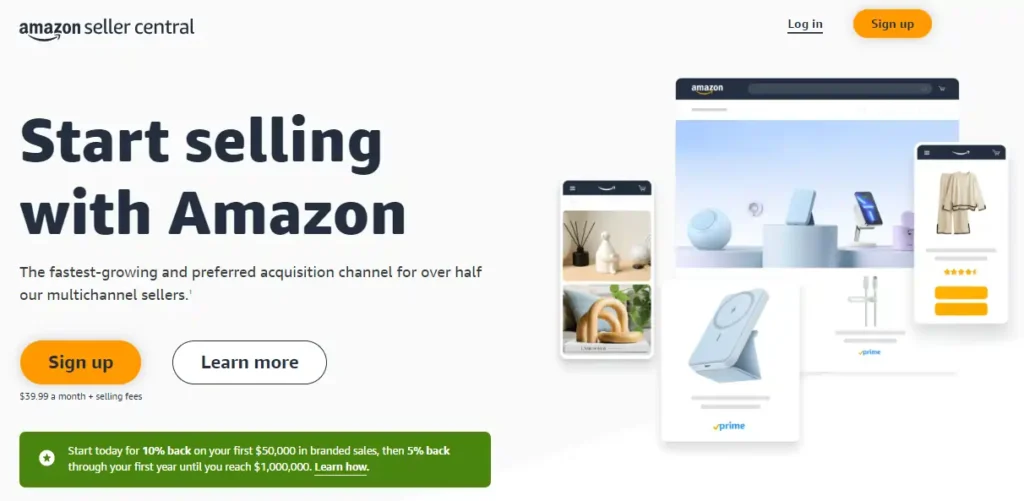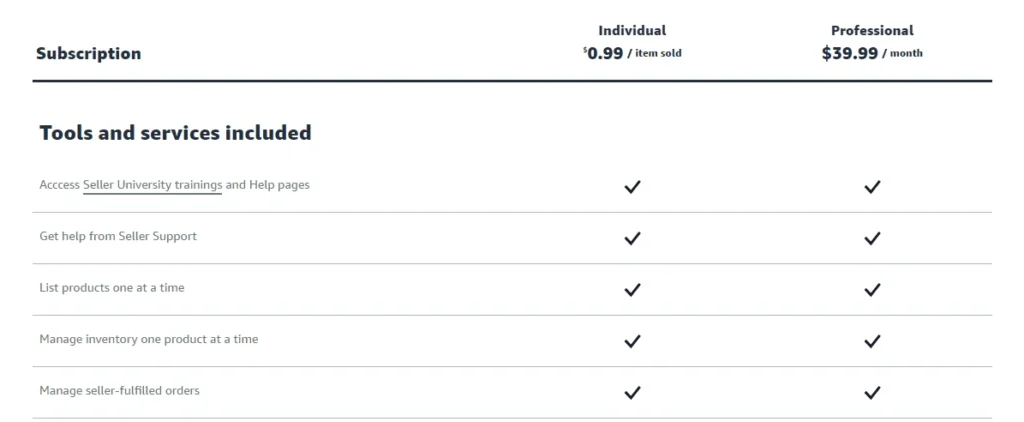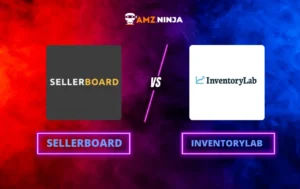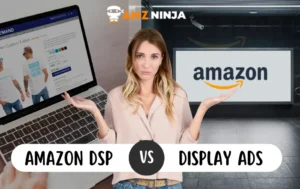
Are you torn between Shopify and Amazon FBA for your ecommerce business?
Should you go with Shopify, the customizable powerhouse that lets you build your brand from scratch, or Amazon FBA, the giant marketplace offering instant access to millions of buyers?
It's a tough choice, but don't worry, we've got you covered.
We'll explore the pros and cons of these two ecommerce giants, helping you make the right decision that aligns with your business goals and resources. The later sections will cover parameters like the key differences, from branding and customization to fees and fulfillment options.
Ready to find your perfect match? Let's get started!
Shopify Vs Amazon FBA: Quick Comparison
| Feature/Aspect | Shopify | Amazon FBA |
|---|---|---|
| Platform Type | Standalone eCommerce platform | Online marketplace with fulfillment services |
| Control | Full control over store design and branding | Limited control; Amazon handles fulfillment |
| Setup | Easy to set up with no coding required | Quick setup but requires shipping products to Amazon warehouses |
| Traffic | Requires own marketing to drive traffic | Access to Amazon's massive customer base |
| Fees | Monthly subscription + transaction fees | Monthly fee + storage, fulfillment, and selling fees |
| Customization | High customization with themes and apps | Limited customization; follows Amazon's guidelines |
| Fulfillment | Self-managed or third-party integrations | Amazon handles storage, packing, shipping, and customer service |
| Branding | Strong brand identity and customer loyalty | Amazon branding on packaging; less brand visibility |
| Customer Service | Self-managed or third-party integrations | Amazon provides customer service and handles returns |
| Scalability | Scalable with various plans and apps | Scalable with Amazon's extensive logistics network |
Shopify Guidelines vs Amazon FBA Guidelines
Shopify Guidelines
To sell on Shopify, merchants must comply with various legal and platform-specific requirements. Key guidelines include:
- Compliance with Laws: Sellers must adhere to the laws of their business jurisdiction and those of their customers. This includes understanding import/export regulations and the legal status of products in different regions.
- Shopify Policies: Sellers must follow the Shopify Terms of Service and Acceptable Use Policy, which prohibits the sale of certain items like weapons and products promoting self-harm.
- Subscription Plans: A Shopify subscription plan is required, with options ranging from Basic to Advanced, each offering different features and pricing.
- Custom Domain: Setting up a custom domain is recommended for branding and SEO benefits.
- Product Listings: Products must be accurately listed, and sellers should ensure their store is well-organized and user-friendly.
- Returns and Exchanges: A clear returns and exchange policy is essential to protect the business and build customer trust.
Amazon FBA Guidelines
Amazon FBA (Fulfillment by Amazon) has its own set of guidelines that sellers must follow to use the service effectively:
- Product Compliance: Sellers must ensure their products meet Amazon's eligibility criteria, including restrictions on hazardous materials and items with expiration dates.
- Packaging Requirements: Products must be packaged according to Amazon's specific guidelines, including the use of FNSKUs, suffocation warnings on poly bags, and proper labeling for tracking.
- Fulfillment Center Registration: Sellers must register Amazon's fulfillment centers as an additional place of business with tax authorities.
- Performance Metrics: Sellers must maintain high-performance standards, including low order defect rates and timely shipping confirmations, to avoid account suspension.
- Customer Service: Amazon handles customer service and returns for FBA products, but sellers must ensure accurate product listings and compliance with Amazon's policies to maintain good account health.
- Fees: FBA involves various fees, including storage, fulfillment, and referral fees, which sellers must account for in their pricing strategy.
Both platforms require adherence to specific guidelines to ensure smooth operations and compliance, but Shopify offers more control over branding and customer interactions, while Amazon FBA provides extensive logistical support and access to a large customer base.
Shopify Seller Control Vs Amazon Seller Central
Let's check out the key differences between Shopify Seller Central and Amazon Seller Central, and learn which one offers the best control and features for your business success.
Shopify Seller Control

Shopify Seller Central is a comprehensive platform designed for building and managing your own online store. It offers extensive customization options, allowing sellers to create a unique brand identity with customizable templates and a wide range of apps.
Shopify provides tools for inventory management, order processing, and customer relationship management. Sellers have full control over their store's design, marketing strategies, and customer interactions. Shopify also supports multichannel selling, enabling integration with various marketplaces and social media platforms.
However, with great control comes the responsibility of driving traffic to one's store. Unlike marketplaces with built-in audiences, Shopify store owners must invest in marketing and customer acquisition strategies to attract buyers to their sites.
Amazon Seller Central

Amazon Seller Central is a centralized hub for managing sales on Amazon's vast marketplace. It simplifies product listing, order management, and inventory tracking. Sellers can leverage Amazon's extensive customer base and logistics network, including Fulfillment by Amazon (FBA), which handles storage, packing, and shipping.
Amazon Seller Central also provides detailed sales analytics and performance metrics to help sellers optimize their operations. However, customization is limited, and sellers must adhere to Amazon's guidelines and policies

Save Big on Helium 10 (up to 35% OFF)
exclusive
Use the exclusive Helium 10 Coupon code “BLOGE6M20” and get 20% Off for the first 6 months. Get up to 35% Discount on annual billings.
Save Big
Customization and Branding
The visual appeal and brand identity of an online store are pivotal in attracting and retaining customers. Both Shopify and Amazon offer different levels of customization and branding, with each platform serving different business needs and strategies.
Shopify's Extensive Branding Options
Shopify is renowned for its extensive customization options, which empower merchants to tailor their online storefronts to match their brand's aesthetic and ethos.
Sellers have the liberty to select from various themes and can further modify them using a wide range of customization tools. This level of control facilitates the creation of a unique and visually appealing online store that can resonate with the target audience and differentiate the brand from competitors.
Furthermore, Shopify provides a comprehensive suite of tools for building and customizing an online store, as well as managing orders, payments, and shipping. This makes it an ideal choice for sellers who are intent on crafting a distinctive online presence and are willing to invest time and resources into building their brand.
| Shopify Customization Features | Description |
|---|---|
| Themes | A variety of customizable themes to suit different business styles and needs. |
| Apps and Add-ons | A rich ecosystem of apps and add-ons to enhance functionality and user experience. |
| HTML and CSS Access | Full access to the store's HTML and CSS for deep customizations. |
| Branding Elements | Ability to incorporate branding elements like logos, color schemes, and custom domains. |
Amazon's Limited Branding
In contrast, Amazon provides sellers with more standardized branding options. The platform's focus is on uniformity and efficiency, which is reflected in the use of standardized templates and limited customization features for product listings.
While this may streamline the process of setting up a store, it also means that sellers have fewer opportunities to distinguish their brand within the Amazon ecosystem.
Despite this, sellers can still make use of Amazon's branding tools such as A+ Content (formerly Enhanced Brand Content) and Amazon Stores to create a more branded shopping experience. However, these options are not as extensive as those offered by Shopify and may not suffice for businesses with a strong emphasis on brand identity and storytelling.
| Amazon Branding Features | Description |
|---|---|
| A+ Content | Enhanced content options for product descriptions including images and text layouts. |
| Amazon Stores | A multi-page, branded storefront within the Amazon platform. |
| Brand Registry | A program for registered brands to gain more control over their Amazon listings. |
When deciding between Shopify and Amazon FBA for e-commerce, consider how vital brand identity is to your business strategy. If presenting a unique brand story and design is a priority, Shopify's extensive customization options may be more conducive to achieving those goals.
On the other hand, if you prefer to leverage a well-established marketplace with a vast customer base and are willing to work within more standardized branding guidelines, Amazon's platform may be suitable.
To further explore the differences between these platforms, including their fulfillment services, check out our comparison of Amazon FBA wholesale vs private label.
Pricing Structures
Understanding the pricing structures is essential for sellers when comparing Shopify and Amazon FBA. Each platform has a different approach to fees, which can have a significant impact on an online seller's profitability and operation costs.
Shopify's Subscription Fees

Shopify operates on a subscription-based model, offering various plans tailored to the needs of different sellers. The most basic plan starts at $29 per month and includes all the essential features needed to start an online store. As sellers grow and require more advanced features, Shopify offers more comprehensive plans with increased functionality.
Here is a quick overview of Shopify's monthly subscription fees:
| Shopify Plan | Monthly Fee |
|---|---|
| Basic Shopify | $29 |
| Shopify | $79 |
| Advanced Shopify | $299 |
Additional fees may apply for payment processing, apps, and other added services. It's important for sellers to consider these costs when calculating their overall expenses. For a more detailed breakdown of what each plan includes, sellers can review Shopify's pricing options on their official website or resources like SellerApp.
Amazon's Fee Structure

Amazon provides two main selling plans: the Individual plan and the Professional plan. The Individual plan is suitable for sellers who sell fewer than 40 items per month, charging $0.99 per item sold without a monthly subscription fee.
In contrast, the Professional plan is aimed at high-volume sellers and costs $39.99 per month, allowing unlimited sales without a per-item fee.
Amazon's fee Structure includes:
| Selling Plan | Monthly Fee | Per-Item Fee |
|---|---|---|
| Individual | $0 | $0.99 |
| Professional | $39.99 | $0 |
In addition to the selling plan fees, Amazon charges additional fees such as referral fees for each item sold and fulfillment fees if using Amazon FBA services. These fees vary depending on the product category and size.
Product Restrictions on Shopify and Amazon FBA

Choosing the right platform for your ecommerce business greatly depends on the type of products you intend to sell and the restrictions that each platform may impose. Let's examine how Shopify and Amazon FBA differ in this regard.
Shopify's Versatility
Shopify stands out for its versatility, allowing sellers to offer a wide array of physical and digital products. Unlike some platforms that impose strict limitations, Shopify provides a more lenient environment for merchants to showcase diverse inventory. Sellers can benefit from the platform's flexibility to curate an expansive product catalog that serves various niches.
Moreover, Shopify's adaptability extends to dropshipping, a business model that is well-supported through the platform. With features like mobile apps for real-time sales and inventory tracking, Shopify facilitates an efficient dropshipping experience.
Shopify also offers a selection of dropshipping apps with varying ratings, enabling sellers to establish a fulfillment network using different service providers. While the platform is conducive to a range of products, finding specific niche items with high ratings can sometimes be a challenge on Shopify.
Amazon's Product Limitations
In contrast, Amazon FBA has certain product restrictions that sellers need to navigate. While the platform offers a marketplace, there are specific items that cannot be sold, and Amazon's guidelines must be followed closely to maintain selling privileges. This can limit sellers who wish to offer products that fall outside of Amazon's accepted categories.
Amazon FBA is particularly well-suited for private labeling. This involves sourcing a product, creating samples, producing the product, and then shipping it to Amazon warehouses. For a product to be successful on Amazon, the listing must be optimized to rank well, which requires a deep understanding of Amazon's SEO and algorithm.
The table below summarizes the product range and restrictions for both Shopify and Amazon FBA:
| Platform | Product Range | Restrictions | Best for |
|---|---|---|---|
| Shopify | Physical and digital products, wide variety | Some restrictions via the Shop App | Versatile product catalogs, dropshipping |
| Amazon FBA | Varied, with some category limitations | Platform-specific guidelines | Private label, built-in audience |
Shopify offers greater freedom for sellers to explore various products without stringent restrictions, positioning it as a platform for creative and diverse ecommerce ventures. Amazon FBA, while restrictive in some aspects, provides access to a massive, built-in customer base and the benefits of a trusted brand name.
Traffic and Marketing
Choosing between Shopify and Amazon FBA requires a deep understanding of how each platform approaches traffic acquisition and marketing. These elements are crucial in driving sales and building a successful online business.
Shopify's Marketing Responsibility
Shopify grants sellers the autonomy to devise and manage their own marketing strategies. This control allows for a tailored approach to reach target audiences but also places the responsibility of driving traffic squarely on the seller's shoulders.
With Shopify, sellers must actively engage in marketing activities such as SEO, content marketing, social media campaigns, and paid advertising to attract customers to their online stores.
| Marketing Effort | Shopify Seller Responsibility |
|---|---|
| SEO | Full |
| Content Marketing | Full |
| Social Media | Full |
| Paid Advertising | Full |
Sellers can leverage social media platforms with substantial user bases, such as TikTok, which has reached 1 billion users as of 2021, offering a vast audience for promotions. To support these efforts, Shopify provides various tools and integrations that can assist with marketing and sales conversions, but the effectiveness of these tools is dependent on the seller's ability to use them strategically.
Amazon's Customer Base Advantage
Amazon, on the other hand, has a customer base with over 2.5 billion shoppers visiting every month. This immense traffic provides a significant advantage for Amazon FBA sellers, as the platform's search algorithms help attract customers and generate sales with less direct marketing effort from the seller. Additionally, conversion rates on Amazon are generally higher compared to Shopify, partly due to Amazon's expertise in conversion rate optimization.
| Platform | Monthly Shoppers | Conversion Rate |
|---|---|---|
| Amazon | 2.5 billion | Higher |
| Shopify | 1 million businesses | Lower |
Sellers using Amazon FBA can benefit from the platform's reputation, customer trust, and Prime membership perks, which contribute to the likelihood of purchase.
However, it's worth noting that while Amazon provides a built-in audience, there is less opportunity for brand personalization and customer relationship building compared to Shopify.
Shopify Vs Amazon FBA Fulfillment Services
The choice between Shopify and Amazon FBA's fulfillment services is a critical decision point for online sellers. Both platforms offer unique benefits that can significantly impact the efficiency and success of an ecommerce business.
Amazon's FBA Benefits
Amazon's Fulfillment by Amazon (FBA) is a comprehensive service that takes charge of storage, packing, fulfillment, and customer service on behalf of the seller. This service allows sellers to store their products in Amazon's fulfillment centers. When an order is placed, Amazon's FBA program takes care of the entire shipping process, including selecting the right product (pick) and preparing it for shipment (pack).
One of the primary benefits of Amazon's FBA is the access to Amazon's massive customer base and the brand's established trust. This can lead to higher visibility and potentially increased sales without the need for the seller to manage complex logistics. Additionally, Amazon offers customer service and return handling, which can be a significant advantage for sellers who prefer to focus on other aspects of their business.
Here are some advantages of using Amazon FBA:
Shopify's Fulfillment Network Comparison
Shopify is currently developing its own fulfillment network to provide an alternative to Amazon's FBA. This network aims to offer sellers more flexibility and control over their stores, which could lead to a more personalized ecommerce experience.
While Shopify's fulfillment network is not yet at the scale of FBA, it presents a promising opportunity for sellers who value customization and brand individuality. Unlike Amazon, Shopify allows for upsells, bump offers, and the ability to build a customer list directly from website visitors. This can be particularly advantageous for sellers who want to grow their brand and have direct communication with their customers.
The table below summarizes the key differences between Amazon FBA and Shopify's fulfillment network:
| Feature | Amazon FBA | Shopify Fulfillment Network |
|---|---|---|
| Storage & Shipping | Handled by Amazon | Handled by Shopify (in development) |
| Customer Base | Access to Amazon's customers | Requires building your own customer base |
| Branding & Customization | Limited | Extensive customization and branding options |
| Seller Control | Must adhere to Amazon's guidelines | More control and flexibility |
For sellers who prioritize a tailored ecommerce experience and brand identity, Shopify's fulfillment network may be the preferred choice.
Whereas, Amazon FBA remains an attractive option for those looking for comprehensive end-to-end fulfillment services. Sellers need to weigh these options against their business goals and needs.
And the Title Goes to?
After considering both of these superb seller platforms, both Shopify and Amazon offer unique advantages that serve different business needs.
Shopify shines with its customization, brand control, and empowerment of small to medium-sized businesses, making it ideal for those who want to build a distinct brand identity.
On the other hand, Amazon FBA provides unparalleled access to a massive customer base and streamlined logistics, perfect for sellers looking to scale quickly.
Well, we tried to cover all the important aspects that could get a better picture of which platform will take you closer to your business goals.







